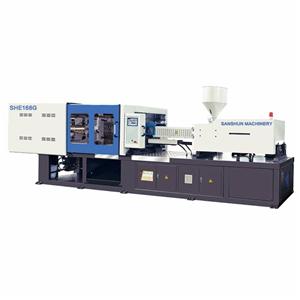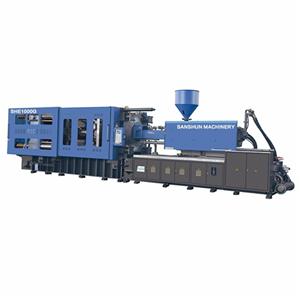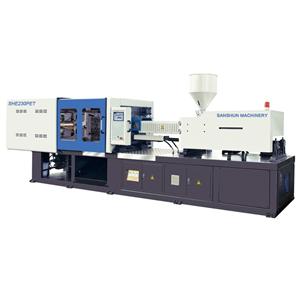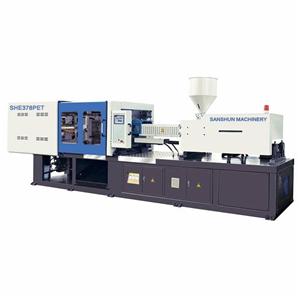- Home
- >
- News & Resources
- >
- Our Blog
- >
- Analyze the causes of the uneven color of injection molded products
Cause analysis and solution of the uneven color of injection molded parts
The performance of the colorant is directly related to the color quality of the molded part. If the dispersibility, thermal stability and particle morphology of the colorant cannot meet the process requirements, it will be impossible to produce a good luster product.
Some colorants are in the form of aluminum foil and flakes. After being mixed into the melt, they will form a directional arrangement, resulting in uneven color on the surface of the plastic part.
Some colorants are dry mixed with the raw materials and adhere to the surface of the pellets after being stirred. After entering the barrel, the dispersion is not good, resulting in uneven color.
If the colorant or additive has poor thermal stability, it will be easily decomposed by heat in the barrel, causing the plastic part to change color. In addition, the colorant is easy to float in the air, deposit in the hopper and other parts, contaminate the injection molding machine and mold, and cause uneven color on the surface of the plastic part.
Therefore, when selecting colorants, they should be carefully selected according to the process conditions and the color requirements of the plastic parts. Especially for the more important indicators such as heat resistance temperature and dispersion characteristics, the process requirements must be met. The colorants should preferably be wet mixed.
If the injection molding equipment and mold are contaminated by colorants, thoroughly clean the hopper, barrel and mold cavity.
Raw materials do not meet the requirements for use
If the content of volatile matter in the raw material is too high, mixed with foreign materials or poorly dried; after the fiber-reinforced raw material is formed, the fiber filler is unevenly distributed, accumulated and exposed, or the resin is lost after the surface of the plastic part is in contact with the solvent, and the fiber is exposed; the crystallinity of the resin Too bad will affect the transparency of the plastic parts, and will cause the uneven color on the surface of the plastic parts.
In addition, raw materials such as high-impact polystyrene and ABS have greater internal stress after molding, which will also cause stress discoloration.
For the above failures:
Remove foreign matter in the raw materials, purify the raw materials, and pre-dry the raw materials to reduce the moisture in the raw materials;
Improve the distribution of fibers in the resin by adjusting the process parameters, and minimize the amount of lubricant and release agent;
Change to resin with better crystallization performance or improve the crystallization performance of melt by controlling the cooling conditions of plastic parts;
For the raw materials prone to forming internal stress, the process conditions that can reduce the internal stress of the molding should be adopted.
Unreasonable molding conditions
Uneven color is often due to different phenomena reflected, and its causes are also different. If the color near the feed port or the welded part is uneven, it is generally caused by the uneven distribution of the colorant or the nature of the colorant does not meet the requirements for use.
If the entire plastic part discolors or has uneven color, it is often related to the molding process conditions. When the barrel temperature is too high, the high-temperature melt will easily decompose in the barrel and cause the plastic part to change color. If the temperature at the nozzle is too high, the melt will coke and accumulate at the nozzle, which will also cause the uneven color on the surface of the plastic part.
In addition, the screw speed, injection backpressure and injection pressure are too high, the injection and holding time are too long, the injection speed is too fast, the plasticization is poor, there are dead corners in the barrel, and the amount of lubricant is too much, which will cause the surface color of the plastic parts to be poor. all.
In order to prevent the molten material from staying in the high-temperature barrel for too long to cause overheating and decomposition, the injection volume should not exceed two-thirds of the injection capacity of the injection molding machine.
When there is coking molten material accumulated in the barrel or nozzle, the barrel should be thoroughly cleaned, the nozzle should be removed and cleaned, and the nozzle tip should be checked for alignment with the sprue sleeve, and the nozzle temperature should be appropriately reduced.
For the adjustment of process parameters such as screw speed, back pressure, injection pressure, injection and pressure holding time, fine adjustments can be made according to the actual situation and according to the principle of itemized adjustment.
Mold problem
If the oil in the mold, mold release agent, or dirt from the friction between the ejector pin and the pinhole are mixed into the melt, poor mold exhaust and uneven mold cooling will cause the surface of the plastic part to discolor. Therefore, the cavity should be clean before injection.
In order to reduce the influence of bad exhaust, the clamping force can be appropriately reduced, or the gate can be repositioned, and the exhaust hole should be set at the final filling position.
Since the mold temperature has a greater influence on the crystallinity when the melt is solidified, the mold should be cooled uniformly. For example, when molding polyamide and other crystalline plastics, if the mold temperature is low, the melt will crystallize slowly, and the surface of the plastic part will be transparent; if the mold temperature is high, the melt will crystallize faster, and the plastic part will be translucent or milky white. In this regard, the surface color of plastic parts can be controlled by adjusting the mold and melt temperature.







